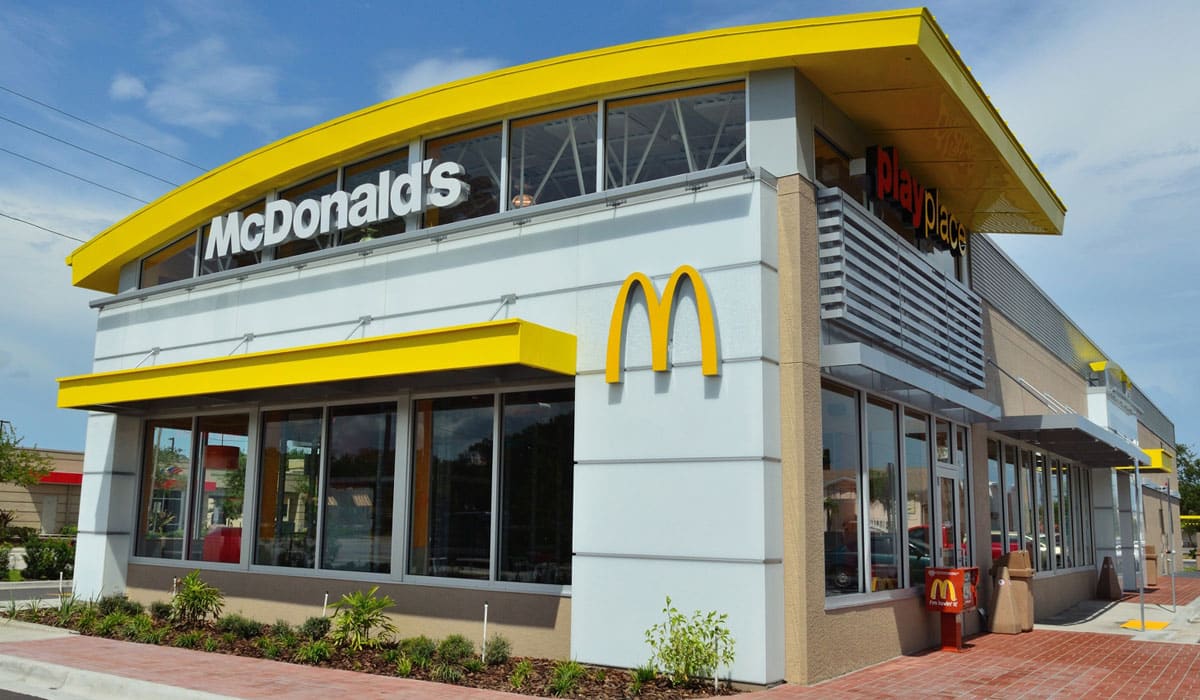In his travels around the world, CEO Chris Kempczinski often asks employees, “What exactly does McDonald’s Corporation sell?”
He receives confused looks at first, and then someone will gather courage to answer with the obvious, “Well, we sell great-tasting food or we sell burgers and fries.” That’s technically true, Kempczinksi said, but as a primarily franchised business, he believes McDonald’s Corporation is charged with selling a brand so operators can sell burgers and fries.
“While some may see it as a trivial distinction, I see it as fundamental,” the CEO told investors during the chain’s Q4 earnings call. “As goes the McDonald’s brand, so goes the health and economic value of our company and system.”
Entering 2023, the brand is going quite well. Kempczinski said the chain is in the best position it’s seen in years, and he has the numbers to back it up. Since the start of COVID, the fast-food giant’s systemwide sales have grown by nearly $20 billion. And that’s with the loss of 847 restaurants in Russia. In Q4, U.S. same-store sales increased 10.3 percent on top of 7.5 percent growth in 2021. On a three-year basis, domestic comps lifted roughly 25 percent.
For the 2022 fiscal year, global comps grew 10.9 percent and traffic increased 5 percent.
Kempczinski attributed McDonald’s success to its “Accelerating the Arches” growth plan, which was first unveiled in November 2020. The strategy—intending to modernize the chain’s branding—calls for investment in culturally relevant marketing, commitment to core menu items, and doubling down on digital, delivery, and drive-thru.
McDonald’s hit on each of those pillars in the fourth quarter. In October, the company appealed to customer nostalgia with Cactus Plant Flea Market, otherwise known as the adult Happy Meal. Demand exceeded expectations, to the point that McDonald’s saw its highest weekly digital transactions ever. The chain also brought attention to fan favorites, like World Famous Fries and Chicken McNuggets, through its FIFA World Cup campaign that touched more than 75 markets worldwide. Kempczinksi noted that McDonald’s gained about one percentage point in market share on chicken in 2022 and also grew its share in beef.
In terms of digital, McDonald’s loyalty program is now in more than 50 markets. The app was downloaded more than 40 million times in the U.S.—that’s better than the second, third, and fourth-highest brands combined. In Q4, digital mixed more than 35 percent in McDonald’s top six global markets, thanks in part to roughly 50 million active MyMcDonald’s Rewards users.
“The McDonald’s global system is executing at a high level, and I’m optimistic that our Accelerating the Arches strategy offers us a long runway of growth,” Kempczinski said.
Pricing increased 10 percent year-over-year, but McDonald’s is “still seeing the consumer is resilient,” the CEO said. The company leads in every market around the world on affordability and value for money. There’s been some trade-down and decreases in units per transaction, but not significantly. There has also been an uptick in frequency, which may mean customers are choosing McDonald’s, but are being cautious about how much they’re ordering.
“Value for money is about the experience we deliver over the price we charge,” CFO Ian Borden said. “And I think it goes back to what Chris [Kempczinski] touched on earlier that we’ve made a lot of investments over the last couple of years in the experience. We’ve got a fully modernized estate. I think we’ve upped our game in terms of our marketing, creativity, and execution. We’ve invested a lot in our digital capabilities and interaction with consumers. And I think all of those strengths are coming together now.”

Although McDonald’s brand is in great shape, the CEO said there’s more it can accomplish. In early January, the company announced an evolution of its Accelerating the Arches plan, including the addition of restaurant development to go alongside the three D’s of digital, delivery, and drive-thru.
For McDonald’s, the formula is simple—strong same-store sales justify increased unit expansion, Kempczinski said. The U.S. ended 2022 with 13,444 restaurants, good for a net gain of six stores. It’s the first time in eight years that McDonald’s domestic business has seen positive unit growth year-over-year.
All of that expansion came from company-owned units. McDonald’s ended last year with 12,751 U.S. franchised outlets, a net decrease of 24 year-over-year. Meanwhile, the domestic corporate footprint grew by 30 units from 663 to 693.
“Around unit growth versus comp growth, we have to walk and chew gum,” Kempczinski said during the company’s Q4 earnings call. “It’s not one or the other. It’s the two of them in combination. And I think the big difference is when you want to be growing units is when you’ve got strong comp sales because that reflects the underlying health of the business. I’m always very leery when I see someone out there putting a strong unit growth number without strong underlying comp sales because that’s historically not been a good recipe in our industry. And so for us, I think we’ve got, as you’ve seen in our results, strong comp sales.”
The brand’s goal is to accelerate the pace of restaurant openings to better capture demand driven by its Accelerating the Arches strategy. McDonald’s is the largest restaurant in the world in terms of unit count and sales, but it still sees whitespace opportunities in many major markets. This includes testing prototypes, such as the one in Fort Worth, Texas, which features a mobile order lane where customers receive orders via a food and beverage conveyor.
The burger chain finished 2022 with 40,275 stores globally, or net growth of 244 restaurants year-over-year. International Operated Markets (i.e. France, Canada, the U.K., Australia, Italy, and Spain) had 10,103 locations, down 682 stores compared to 2021 because of Russia. International Developmental Licensed Markets (i.e. China, Japan, Brazil, and South Korea) had 16,728 stores, up 920 units from the previous year.
McDonald’s will spend between $2.2 billion and $2.4 billion on capital expenditures in 2023, and about half of that will go toward new unit openings. Globally, the category leader will open roughly 1,900 restaurants, with more than 400 of those openings coming in the U.S. or International Operated Market segments. The remaining 1,500 restaurants, including approximately 900 in China, will be in International Developmental Licensed Markets. McDonald’s estimates 4 percent unit growth this year, which means about 1,500 net new openings.
“I feel very good about the outlook. And so that now gives to me permission to put on top of that some unit growth,” Kempczinski said. “But we need to be very smart about where and how we do that. And I think sometimes in the past, we were looking at just putting units and looking at an absolute number and not maybe looking at the quality of the site. And so that’s why we want to take some time this year to make sure we feel confident about the exact number, the pacing, the quality of the site so that when we do roll that out that we’ve got the ability to continue to drive both comp sales as well as unit growth.”







